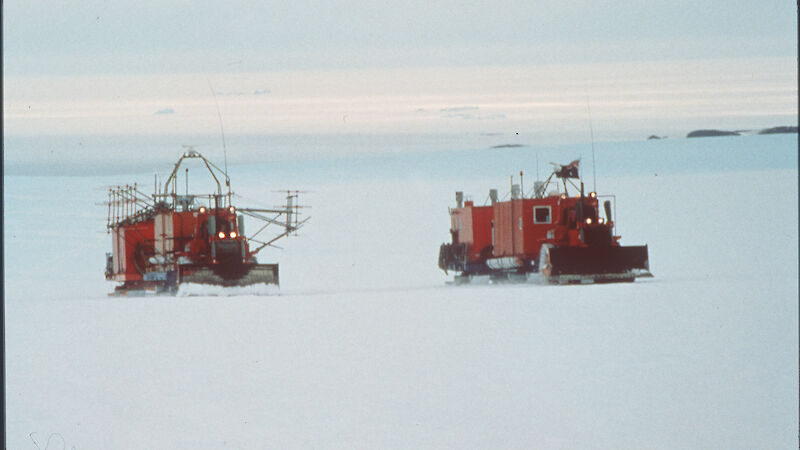Mr Robert Kiernan has participated in the four major Lambert Glacier Basin oversnow traverses, and was field leader of three of these. His role, particularly in establishing the field operational procedures on the first traverse, and as leader, was pivotal to the overall success of the program.
The Lambert Glacier Basin traverse program, conducted between 1989/90 and 1994/95, was one of the largest and most comprehensive programs of scientific exploration of the inland ice sheet ever undertaken by ANARE. The traverse route between Mawson and the Larsemann Hills via the hinterland of the Lambert Glacier is over 2200 km long, climbs to nearly 3000 m elevation, extends to 76°S, and, at the southernmost point, crosses a region of heavy crevassing associated with a number of major ice streams. The traverses were undertaken as part of study of the ice mass budget of one of the major Antarctic drainage basins and collected extensive glaciological, geophysical and meteorological data along the previously unexplored route. All the scientific aims of the program were completely achieved, and six automatic weather stations deployed by the traverse party continue to provide meteorological data from the basin via satellite.
The major traverses conducted in the summers of 1989/90, 1990/91, 1993/94 and 1994/95 were undertaken by a team of three scientists and three mechanics, living and working from sled-mounted caravans towed by three Caterpillar D7 tractors. On each expedition the party spent approximately 100 days in the field, completely isolated from outside contact or support, and largely beyond search and rescue range from other Australian facilities. The complete success of the program is a result of the efforts of all those who participated in the field program and who supported the program from the stations and Australia, but Mr Kiernan’s role in forging and leading the field teams was crucial.
As field leader Mr Kiernan was responsible for route planning, navigation, communications, day to day operational procedures, and scientific scheduling, and for overseeing all aspects of provisions, stores, fuel, and emergency procedures. As a licensed land surveyor he was also responsible for the precise geodetic measurements made every 30 km to determine ice sheet movement. Mr Kiernan was meticulous with the detailed planning and preparation before each expedition. It was this detailed preparation that enabled the traverse to proceed almost routinely once in the field and which was a key to the success of the overall program.
Mr Kiernan led the traverses very much by example and generally worked incredibly long hours throughout his time in the field. He established harmonious and close field teams with complete confidence in his leadership through his professional competence combined with an easy-going and considerate manner. Under Mr Kiernan’s leadership there was little conflict and no major inter-personal difficulties between members of the extremely isolated teams. Major mechanical breakdowns on both the 1989/90 and 1990/91 traverses required aspects of the program to be redesigned in the field: on both occasions Mr Kiernan made decisions that enabled the program to be fully achieved despite the difficulties.
Mr Kiernan constantly put the program goals ahead of his own personal interests. For example, after 100 days in the field during the 1993/94 traverse, Mr Kiernan remained a further 3 months in the field at the Larsemann Hills, preparing plant and equipment for the 1994/95 program before moving to the relative comfort of Davis for the winter.
Mr Kiernan also made a major professional contribution to the scientific program. Precise geodetic GPS measurements which were a cornerstone of the scientific program had rarely been made in the Antarctic, and the dual frequency receivers available had been designed for mid-latitude application. The initial data from Antarctic turned out to be much noisier than specifications because of ionospheric noise and problems with the receiver design. It was only after considerable background research and a lot of dedicated and persistent effort in cleaning and reprocessing the data that Mr Kiernan achieved the required accuracy.

